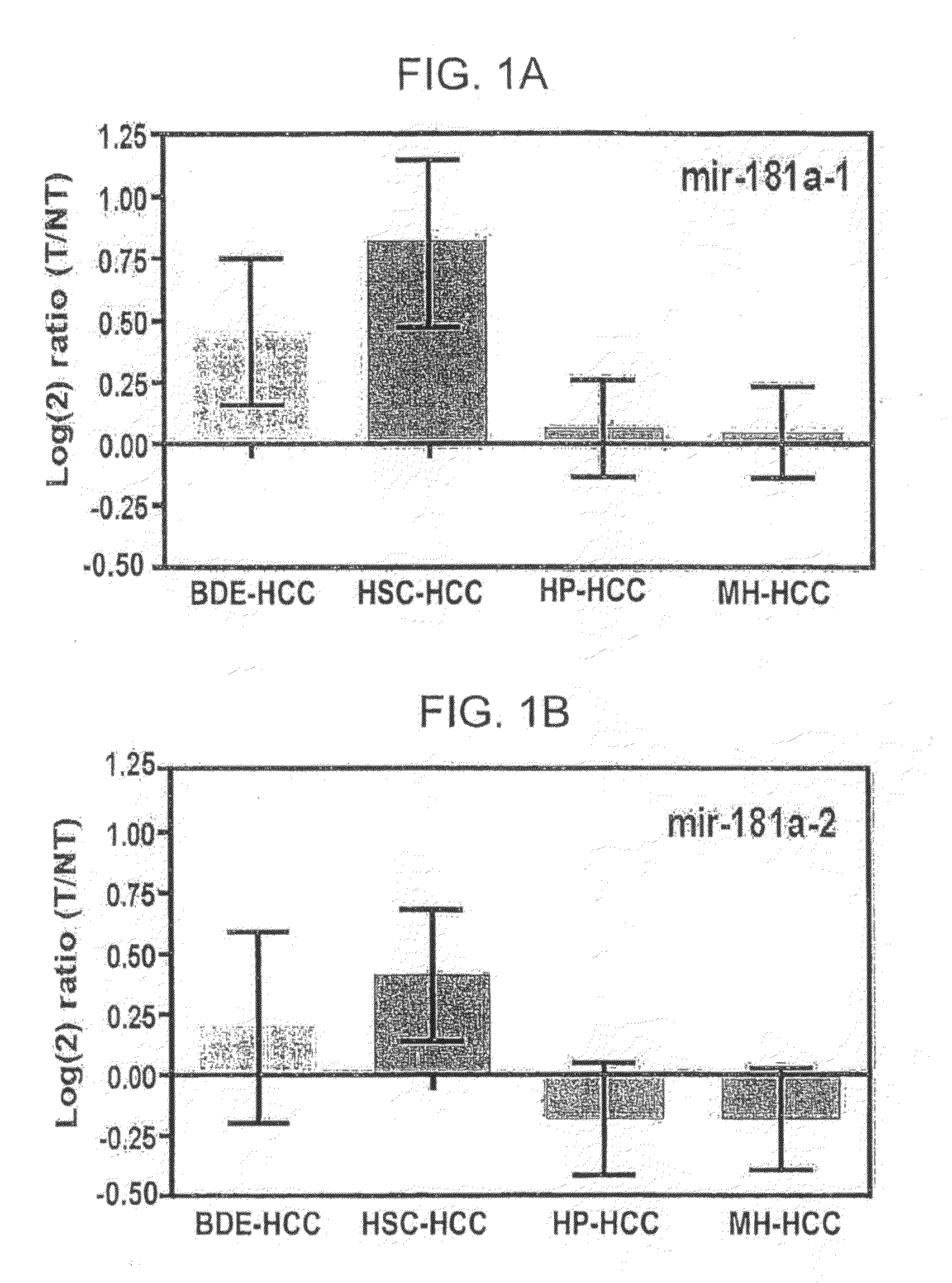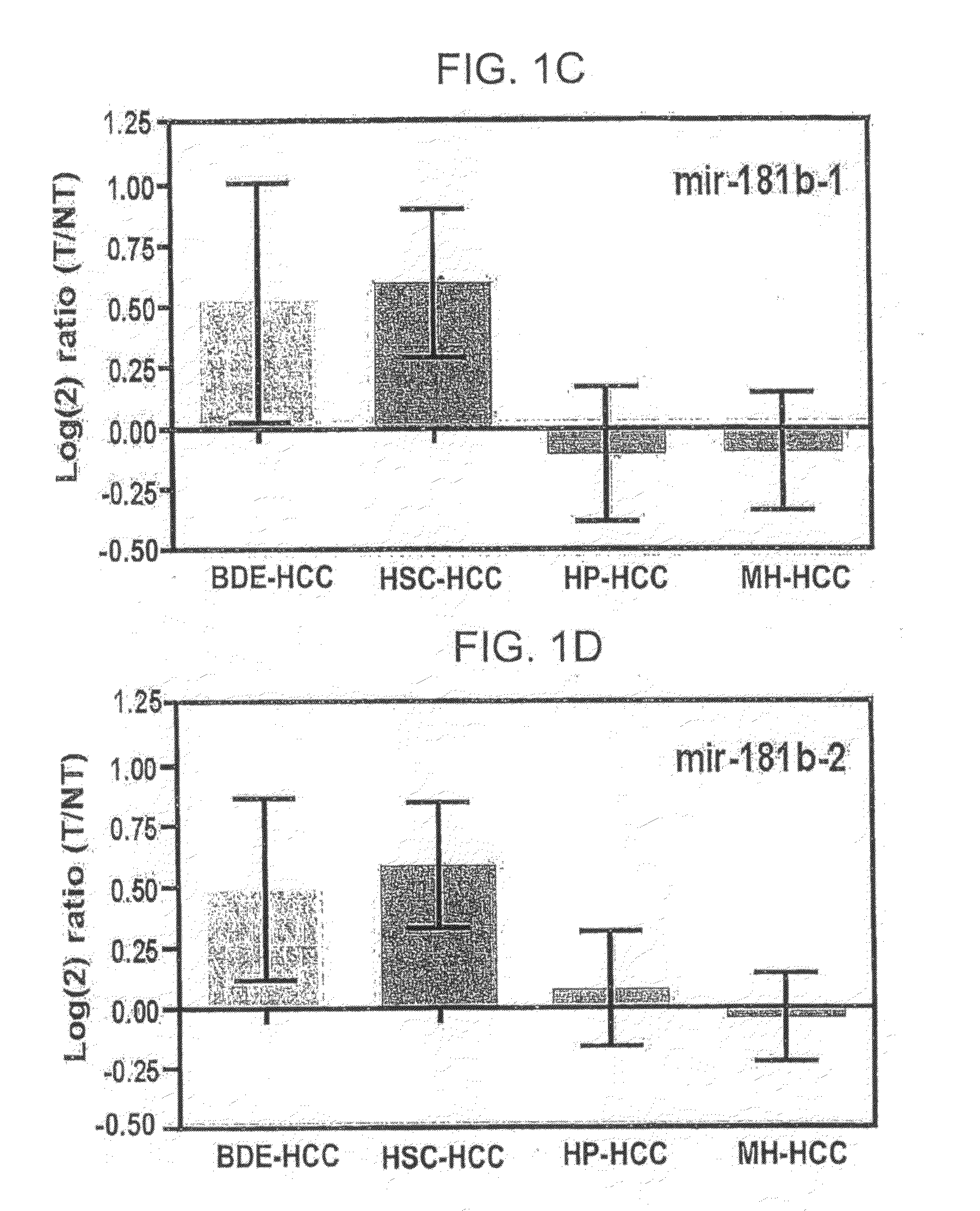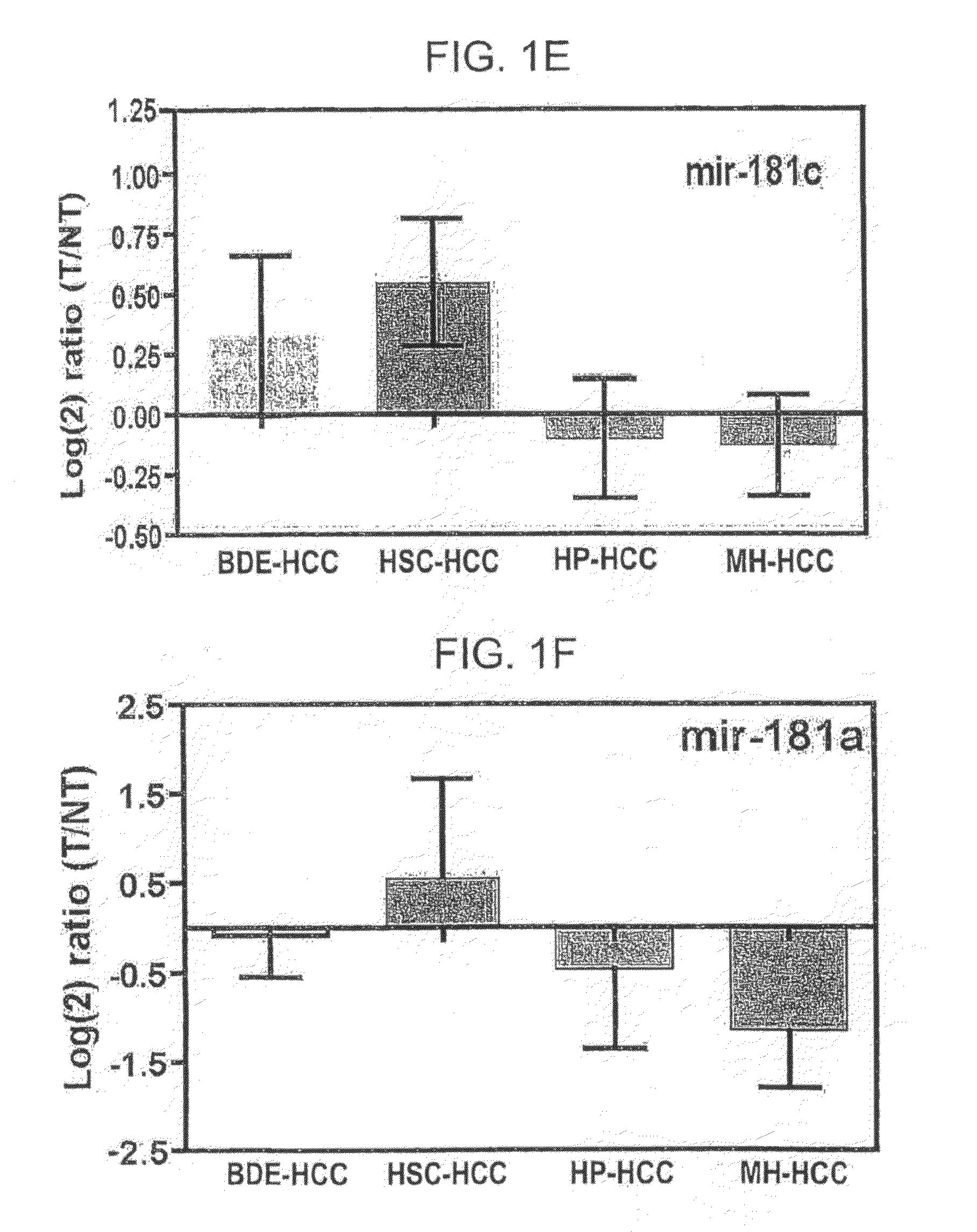Methods for Determining Heptocellular Carcinoma Subtype and Detecting Hepatic Cancer Stem Cells
a technology for detecting hepatic cancer stem cells and heptocellular carcinoma, which is applied in the direction of drug compositions, liquid/fluent solid measurements, peptides, etc., can solve the problems of hampered patient and achieve the effect of improving the prognosis and treatment stratification
- Summary
- Abstract
- Description
- Claims
- Application Information
AI Technical Summary
Benefits of technology
Problems solved by technology
Method used
Image
Examples
example 1
[0111]This example demonstrates that miRNA expression can differentiate HCC tissue from non-cancerous tissue and can distinguish among four subtypes of HCC.
[0112]Utilizing paired HCC tissue and surrounding non-HCC tissue samples from a total of 230 HCC patients, a total of 209 non-redundant miRNAs were found to provide 97% accuracy in correctly identifying the samples (multivariate p<0.01). Heterogeneity of the samples was evident and the samples were clustered based on the four HCC subtypes (HSC, BDE, HP, and MH).
[0113]Expression of significant miRNAs among the four HCC subtypes were sought. Hierarchical clustering revealed that 39 pre-miRNA genes showed significant altered expression in the four HCC subtypes (p<0.002, FDR<0.05) from overlapping genes based on both class comparison and class prediction with a 10-fold cross validation to establish prediction accuracy (Table 1). Of the 39 miRNAs, some were up-regulated and others were down-regulated in each subtype (FIG. 10).
TABLE 1H...
example 2
[0114]This example demonstrates that mir-181s are associated with HSC-HCC and contribute to the function of liver cancer stem cells.
[0115]The expression levels of mir-181s in both precursors (A) and mature miRNAs (B) are significantly increased in HSC-HCCs and BDE-HCCs but decreased in HP- and MH-HCCs, versus their corresponding non-HCC tissues. HSC-HCC and BDE-HCC refer to HCCs with stem cell-like features and bile duct epithelium-like features, respectively. Mir-181 expression, based on miRNA microarray analysis of miRNA precursors in each HCC subtype versus corresponding non-HCC tissues from 230 patients is shown in FIG. 1A-E for mir-181a1, mir-181a2, mir-181b1, mir-181b2 and mir-181c, respectively. Gene expression ratios are shown (mean±95% CI) in log2 scale. FIGS. 1F-J shows RT-PCR analysis of all mature mir-181s in 40 HCC and non-HCC sample pairs. Scatter plot analysis of pre-mir-181s and mature mir-181s is shown in FIG. 2, with r-values representing Spearman's correlation coe...
example 3
[0118]This example demonstrates that mir-181 expression is involved in the activation of wnt-beta-catenin signaling.
[0119]After transfecting pMSCV-mir-181b-1 to HuH1 cells, mir-181b was detected by RT-PCR and expression was compared to that of pMSCV-hTR cells. Gene expression was measured in triplicate and is shown as mean±SD in FIG. 4. As shown, mir-181 was over expressed in the HuH1 cells.
[0120]HuH7 cells were treated with 2′-O-methyl mir-181s antisense and the expression of all mir-181s was subsequently detected. A significate decrease in gene expression (compared to a control oligo), which was measured in triplicate, is shown as mean±SD in FIG. 5.
[0121]Following mir-181 overexpression in Hall cells, the expression of beta-catenin regulated genes (CCND1, TACSTD1, and DKK1) was detected by RT-PCR and compared to expression by pMSCV-hTR cells (FIGS. 6A-C). Cell lysates of cell lines were also analyzed by immunoblots with antibodies to β-catenin and actin.
[0122]Following mir-181 dow...
PUM
| Property | Measurement | Unit |
|---|---|---|
| weight | aaaaa | aaaaa |
| volume | aaaaa | aaaaa |
| temperature | aaaaa | aaaaa |
Abstract
Description
Claims
Application Information
 Login to View More
Login to View More - R&D
- Intellectual Property
- Life Sciences
- Materials
- Tech Scout
- Unparalleled Data Quality
- Higher Quality Content
- 60% Fewer Hallucinations
Browse by: Latest US Patents, China's latest patents, Technical Efficacy Thesaurus, Application Domain, Technology Topic, Popular Technical Reports.
© 2025 PatSnap. All rights reserved.Legal|Privacy policy|Modern Slavery Act Transparency Statement|Sitemap|About US| Contact US: help@patsnap.com



